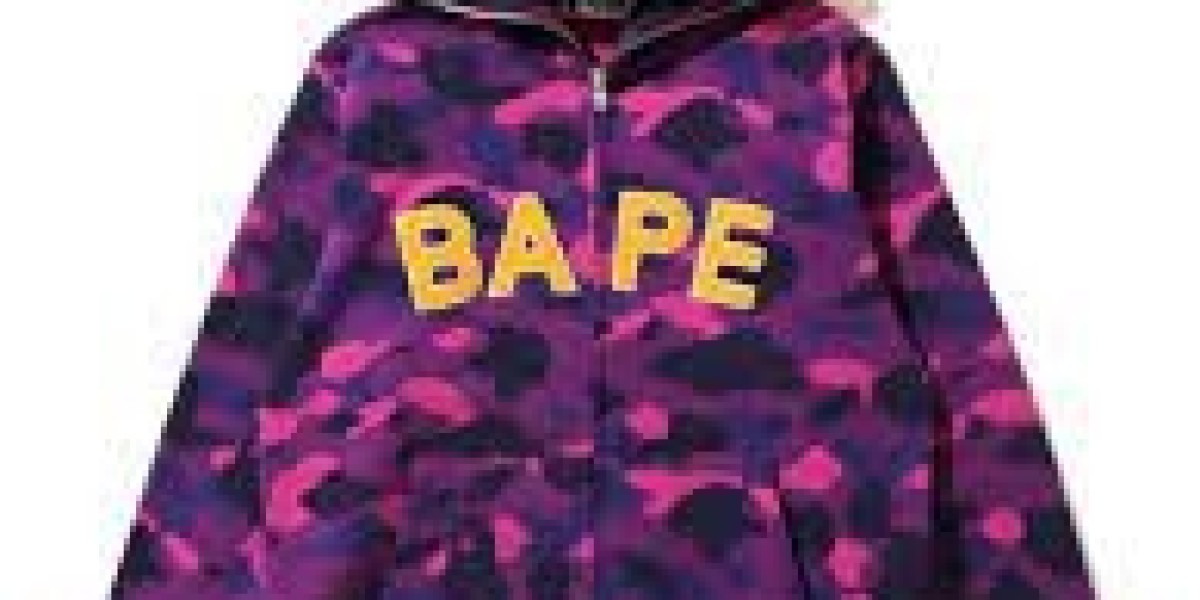Bape, short for A Bathing Ape, is a Japanese streetwear brand that has achieved remarkable cultural significance and bape shirt popularity within the streetwear and urban fashion scenes. Founded by Nigo (real name Tomoaki Nagao) in 1993, Bape has undergone a remarkable evolution, becoming an iconic brand known for its distinctive designs, limited releases, and collaborations with celebrities and other brands.
One of the key elements contributing to Bape's cultural significance is its unique and eye-catching designs. The brand is characterized by its use of bold and playful graphics, often featuring camo patterns, iconic characters like Baby Milo, and references to pop culture, including music and movies. Bape's distinctive aesthetic sets it apart from traditional fashion brands, appealing to a younger, edgier demographic.
Bape's limited releases and exclusivity have also played a pivotal role in its popularity. The brand frequently employs a strategy of producing limited quantities of its products, which creates a sense of scarcity and exclusivity. This scarcity drives demand among collectors and enthusiasts who are willing to pay a premium to own a piece of Bape clothing. The concept of "drops," where new Bape products are released at specific times and locations, has become a cultural phenomenon and marketing strategy that keeps fans eagerly awaiting each new release.
Collaborations have been another driving force behind Bape's rise to prominence. The brand has partnered with numerous influential figures and brands in music, fashion, and art, including Pharrell Williams, Kanye West, and Supreme. These collaborations not only introduce Bape to a wider audience but also create a sense of cultural relevance and desirability. Bape's ability to collaborate with tastemakers and trendsetters has solidified its place at the forefront of streetwear culture.
Bape's journey from its humble beginnings in Tokyo to global recognition has been a testament to the brand's enduring appeal. In the early 2000s, Bape garnered attention from hip-hop artists and celebrities, further propelling its popularity. The brand's signature Shark Hoodie, featuring a zip-up hood with shark teeth and eyes, became an iconic item worn by celebrities like Kanye West and Pharrell Williams, contributing to its status as a streetwear staple.
Over time, Bape has expanded its reach beyond clothing. The brand now offers a wide range of products, including sneakers, accessories, and even home goods. This diversification has helped Bape maintain its relevance and attract a broader customer base.
In terms of cultural significance, Bape has become synonymous with streetwear and urban fashion. It has inspired countless other brands and designers and has shaped the aesthetic of an entire generation. Bape's influence can be seen in the proliferation of streetwear culture, from the rise of sneaker culture to the adoption of casual and sporty styles in high fashion.
In conclusion, Bape's cultural significance and popularity in streetwear and urban fashion scenes can be attributed to its unique designs, limited releases, high-profile collaborations, and its ability to evolve and adapt to changing trends. From its origins in Tokyo to its global recognition today, Bape remains a symbol of individuality and self-expression in fashion, making it a brand that continues to captivate and inspire fashion enthusiasts around the world.








